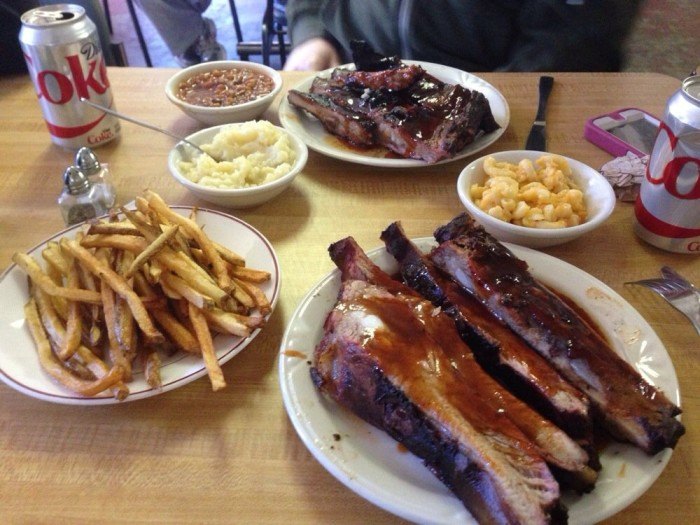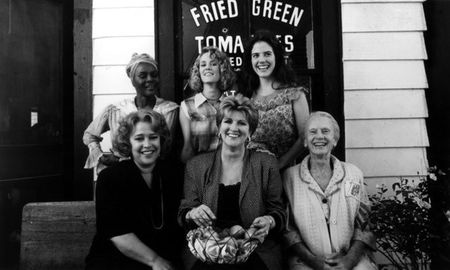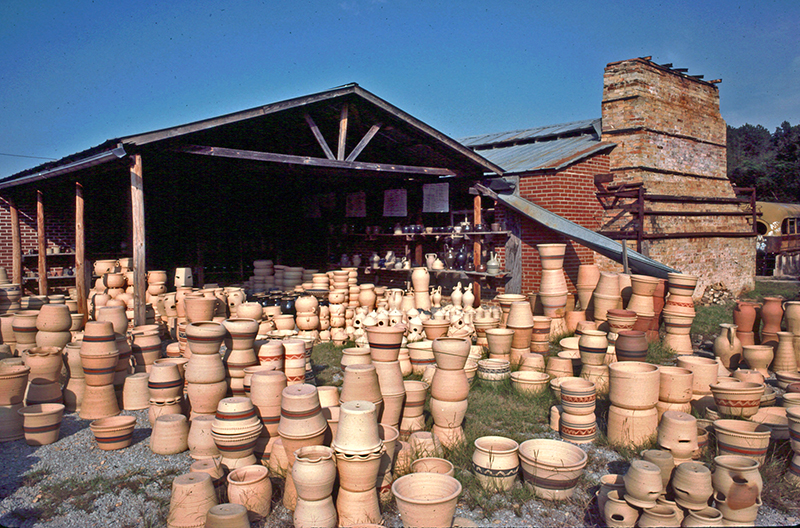Gee's Bend Is Famous for Quilt Making
Gee's Bend Alabama and folk life go hand in hand for one very simple reason, the reputation of their numerous quilt makers.
Most of the quilts that come from this very small community in the west Black Belt region of the state are often called improvisational, or as the locals called them, “my way” quilts.
The reason for this is quite simple; they are uninhibited by the traditional norms of what is considered to be fine or “folk art”.
In fact, the quilt makers from this small community will often say that they are guided instead by their faith, their personal vision, and because of this, they will head off on do them “their way”.
Because of this, they will very often exhibit unexpected patterns, some very unusual colors, and to the delight of many, some surprising rhythms.
The Gee's Bend quilt makers often tell a story that tries to describe their numerous different styles.
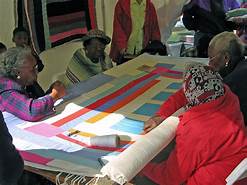 Women Making Quilts in Gee's Bend
Women Making Quilts in Gee's BendHowever, when these stories are combined, their very unique artistic voices soon become a statement that tells the story of this community’s tradition.
The people here have done a lot of things their own ways for years, and over those years, they have made the decision to stick to them.
The quilts made here have been described in several ways, including unorthodox, yet it is this style of tradition that has for decades identified their individualism.
By doing it “their way”, these ingenious women have shown the country their innovative ways of looking at fabric, designing it, and then formatting it into some of the most famous abstract art and folk life in the entire country.
The History of Gee's Bend
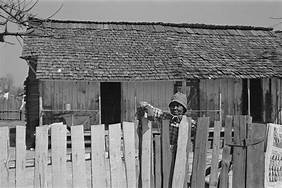 Early Homes in Gee's Bend
Early Homes in Gee's BendGee's Bend has a very unique and interesting history, and since 1949, it has officially been known as Boykin, located in Wilcox County.
Even today, this very small and history rich community only has about 750 people living there, and most all of them are descendants of enslaved African Americans.
However, even though it has been the subject of poverty and underdevelopment for years and years, it has demonstrated something similar communities have not, cultural wealth.
This cultural wealth has all come from this vibrant folk art of quilt making and included with this national attention has also come critical acclaim.
Most all of the settlers of this historic State created communities along its many waterways, and Gee's Bend was no different.
This historic town was settled by Joseph Gee, a very large landowner from North Carolina, who in 1816 set up the town on the north side of a large bend in the Alabama River, in what is today known as Wilcox County.
He bought 18 enslaved African Americans with him and established a cotton planation.
When he died, he left his entire estate, that included by this time over 47 slaves, to two of his nephews, Sterling and Charles Gee, who in 1845, sold the plantation to Mark Pettway.
The Pettway family, whose name is still very prominent in this small community, held the land until 1895, when they sold it to an owner that operated as an absentee landowner.
After the freeing of slaves with the Civil War, most all of them stayed on the plantation, where they worked as sharecroppers as well as tenant farmers.
Gee's Bend Begins to Change
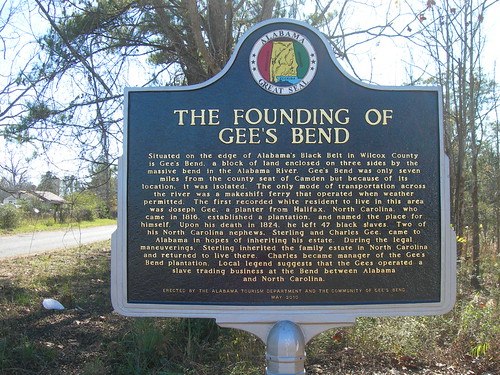 Gee's Bend Sign
Gee's Bend SignThe 1930’s brought a lot of change to the Gee's Bend area, and when a local merchant who extended credit to the residents of this small town died, his family immediately demanded payment of all debts owed to them.
Once this occurred, the families of this small community had to set and watch as their food, their tools, seed, and even their animals, were taken from them.
If it had not been for the Red Cross stepping in to distribute rations, the town might not have survived, but that is not the only thing that saved them, as two other critical things happened.
The Van Graaff family, who had bought the plantation from the Gee’s, decided to waive rents for the tenant farmers, and in 1937, they sold their land to the federal government.
Once this happened, the FSA, the Farm Security Administration, established the area as a pilot project of a cooperative program designed to sustain the residents, and called it the Gee's Bend Farm Inc.
Once this was done, the government began to build houses, subdivided the property, and sold land to the families that lived there.
The historically marked the first time the African American population living there could control the land which they worked on.
However, in the waning years of the Great Depression, which brought the widespread usage of mechanization in farming, this began to cause several hardships to the local farmers.
Because of this, many residents began to move away from the area, but several also stayed, as the land now belonged to them.
However, this was not the only changes that would affect life in Gee’s Bend, and two other major things happened.
In the year 1949, the United States post office was established there, and immediately the federal government imposed the name of Boykin for the town, against the wishes of the community.
Then, in 1962, the government built a Dam on the Alabama River, which immediately flooded thousands of acres of fertile farmland used by this small community.
There was however, one other thing that happened to set back this small community.
During the Civil Rights Era, the officials of Wilcox County suddenly terminated ferry service across the Alabama River.
This was by design, as at the time there was not ONE African American citizen of Gee’s Bend registered to vote in the County, and by stopping the Ferry service, it made citizens have to drive two hours to Camden, the county seat.
In the minds of most of the residents, this was done to prevent them from registering to vote.
Gee's Bend and the Quilt Making Community
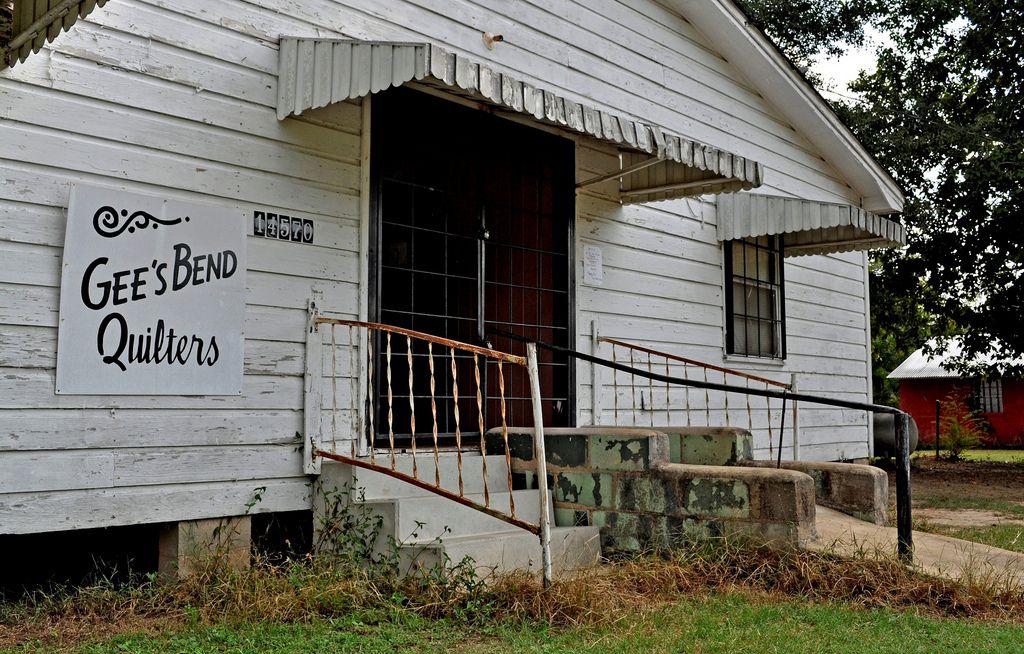 Gee's Bend Quilt Mural Trail
Gee's Bend Quilt Mural TrailSince the early 1960’s, Gee's Bend has slowing gained a lot of national attention from the “folk life” quilts that have been produced by the women in the community, as well as by the Freedom Quilting Bee in the neighboring town of Alberta.
In 1972, the Freedom Quilting Bee secured a contract with Sears and Roebuck, to produce corduroy pillow covers.
These covers were made of wide-wale cotton corduroy, and these now famous covers came in a variety of colors.
These colors included cherry red, gold, tangerine, and avocado leaf, but this left this community of quilters little room for personal creativity.
Because of the contract, they were divided into groups to maximize their daily output; however this did not stop their creativity.
Instead, they took the leftover lengths and scraps of this corduroy to their family and friends, and these scraps were then transformed from remnants that would have been tossed away, into vibrant and individual works of art.
In the late 1990’s a famous folk-art collector from Atlanta, Georgia, William Arnett, came into the area and bought hundreds of quilts, after seeing a photograph by Roland Freeman of one of these quilts draped over a woodpile.
In the years since, these pieces have been praised as brilliant pieces of modern art by millions.
Gee's Bend quilts carry forward through time a very old and proud tradition of textiles made for your home and family, but they only represent a small part of the rich body of African American quilts.
However, they are in a league by themselves, as there are few other places that can boast of the extent of their artistic achievement.
This artistic flavor is the result of both geographical isolation as well as an unusual degree of cultural continuity.
A collection of quilts form this small Alabama community was shown at the Houston Museum of Art before traveling to the Whitney Museum in New York City, where it also gained very high acclaim from art critics.
However, despite this exhibits acclaim, it also initiated serious academic discussions on the definition of art, as well as the concern about the exploitation of the quilters.
But there are few places anywhere else in the country where there has been three and sometimes four generations of women from the same family with these talents, and this bears witness to the visual conversations among quilting groups and lineages.
And despite the concerns of the New York City’s academic community, the art from Gee's Bend also stands out for its flairs where quilts are designed boldly and by impulse, and has nothing to do with exploitation.
In fact, these geometrics are so unique that they also involve transforming recycled work clothes and dresses, as well as feed sacks and fabric remnants.
In the year 2003, these famous quilters established the Gee’s Bend Quilters Collective, to help market and promote their quilts.
In 2007, the community also installed a series of murals of quilts designs on the main road into their town, and they were extremely proud of this display.
References
https://www.soulsgrowndeep.org/gees-bend-quiltmakers

Alabama Gift Store
Numerous Items for You and Your Family to Enjoy
See it here at the Gift Store
Copyright 2019-2023 Alabamabackroads.com
All Rights Reserved
